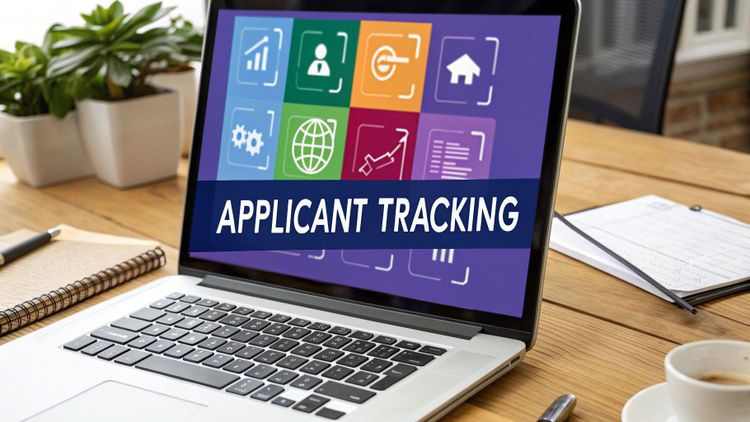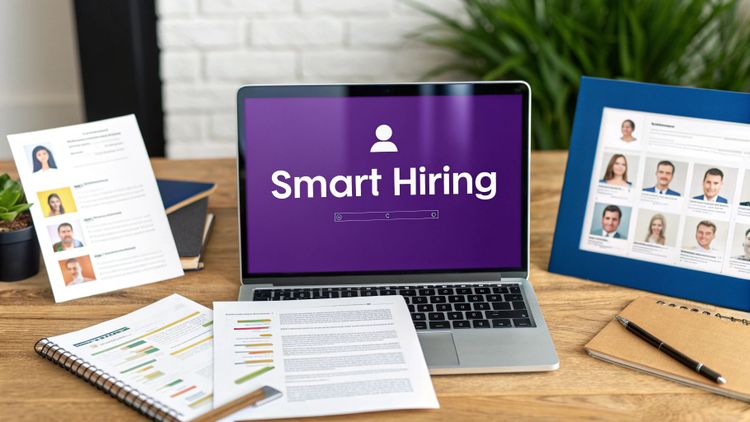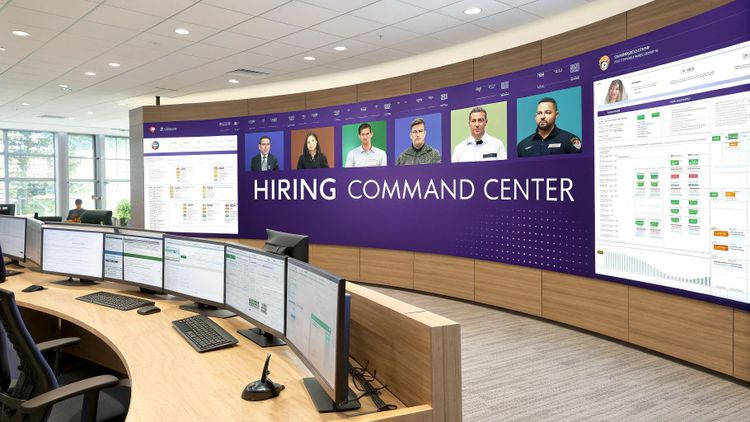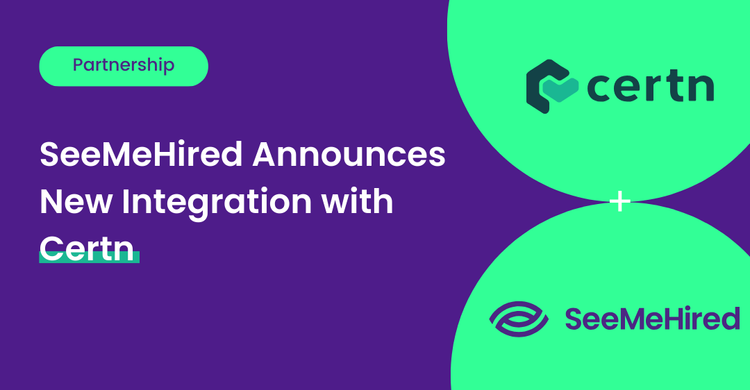HR Tech
Recruitment Automation UK: Transform Your Hiring Success
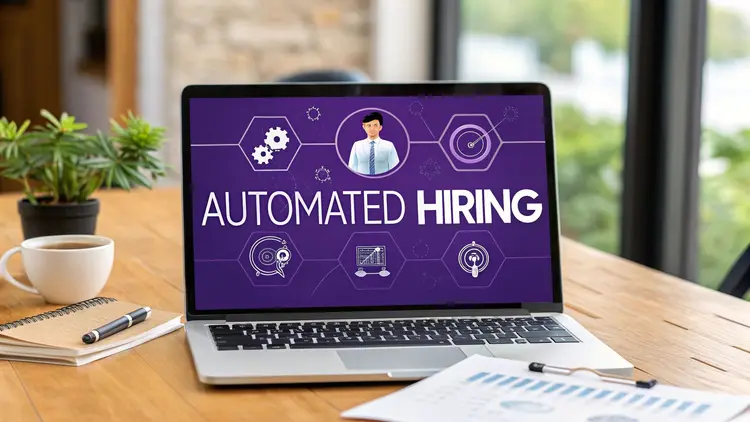
Recruitment Automation UK: Transform Your Hiring Success
Grasping Recruitment Automation and Its Importance Now

Let's be honest, recruitment can significantly drain resources. Sorting through piles of CVs, arranging interviews, and keeping candidates informed consumes valuable time that could be better spent on more strategic HR tasks. This is where recruitment automation becomes relevant. For UK businesses vying for talent in a competitive market, automation is increasingly essential.
Listen to the podcast here:
What is Recruitment Automation?
Recruitment automation utilises software and technology to manage repetitive, time-consuming recruitment tasks. This includes automatically posting job adverts on various platforms like Indeed and LinkedIn. Some companies employ AI tools to pre-screen candidates based on their skills and work history.
Automation can also simplify interview scheduling, dispatch personalised emails to candidates, and even assist with onboarding. This allows HR professionals to focus on building relationships with candidates and making well-informed hiring decisions.
Why is Recruitment Automation Essential in the UK Now?
The UK job market is currently unstable. Talent shortages are affecting numerous sectors, while hiring volumes are increasing. This places significant pressure on HR departments to find and secure the best candidates quickly and efficiently. The use of AI and automation in recruitment processes across the UK has expanded significantly recently.
Research indicates that the use of AI in recruitment has tripled year over year, with 3 in every 10 UK employers now using some form of AI in their hiring processes. For more detailed statistics, you can visit: https://standout-cv.com/stats/ai-in-recruitment-statistics-uk
Several factors are driving this increase in automation:
Increased Efficiency: Automation accelerates the hiring process, reducing time-to-hire and enabling companies to fill essential roles more promptly.
Improved Candidate Experience: Automated communication keeps candidates informed and engaged throughout the hiring journey.
Cost Savings: By automating administrative tasks, HR teams can accomplish more with fewer resources.
Data-Driven Decisions: Automation provides valuable data and metrics, enabling businesses to analyse the effectiveness of their recruitment strategies.
This evolving market makes recruitment automation not just a helpful tool but a vital component of effective talent acquisition in the UK. To understand the broader impact, read this article: What Is Recruitment Automation and How It Will Shape The Future of HR?
Crafting the Business Case for Recruitment Automation

The appeal of recruitment automation extends beyond merely simplifying tasks. For UK businesses, the real advantage lies in its tangible impact on their finances. Leading companies utilising automation are experiencing considerable cost reductions, along with faster hiring cycles and improved candidate quality. This is not just hearsay; it's corroborated by data. For example, using AI can cut hiring costs by a significant 71%, saving recruiters an average of 4.5 hours per week on administrative work. Want to delve deeper? Find more detailed statistics here.
Calculating the ROI of Recruitment Automation
Determining the return on investment (ROI) of recruitment automation involves examining several key metrics:
Reduced Cost-Per-Hire: Automation reduces spending on advertising, agency fees, and administrative overhead.
Faster Time-to-Fill: Filling roles more quickly directly reduces lost productivity and allows new hires to start contributing sooner.
Improved Candidate Quality: AI-driven tools can identify candidates with the precise skills and experience needed more effectively than manual methods, resulting in better long-term hires.
These measurable benefits create a compelling business case for investing in recruitment automation.
Hidden Costs of Manual Recruitment
Many businesses overlook the full cost of traditional recruiting. Beyond the obvious expenses, there are hidden costs that often go unnoticed:
Lost Productivity: HR teams spend valuable time on manual tasks, diverting them from more strategic initiatives.
Slow Hiring Cycles: Delays in filling open positions can negatively affect team performance and push back project deadlines.
Poor Candidate Experience: Manual recruitment processes can lead to communication problems and frustrated applicants.
These factors add up to a considerable financial drain, a problem that automation can effectively mitigate.
Scaling Hiring Efforts Effectively
As businesses grow, so do their hiring requirements. Recruitment automation enables organisations to scale their recruiting efforts without a corresponding increase in HR staff. By automating repetitive tasks, current teams can manage a larger number of applications and simplify the entire hiring process.
This scalability is crucial for staying competitive and achieving sustainable growth in the UK market. It allows businesses to adapt swiftly to changing demands and secure top talent without overburdening their resources.
The Current State of UK Recruitment Automation
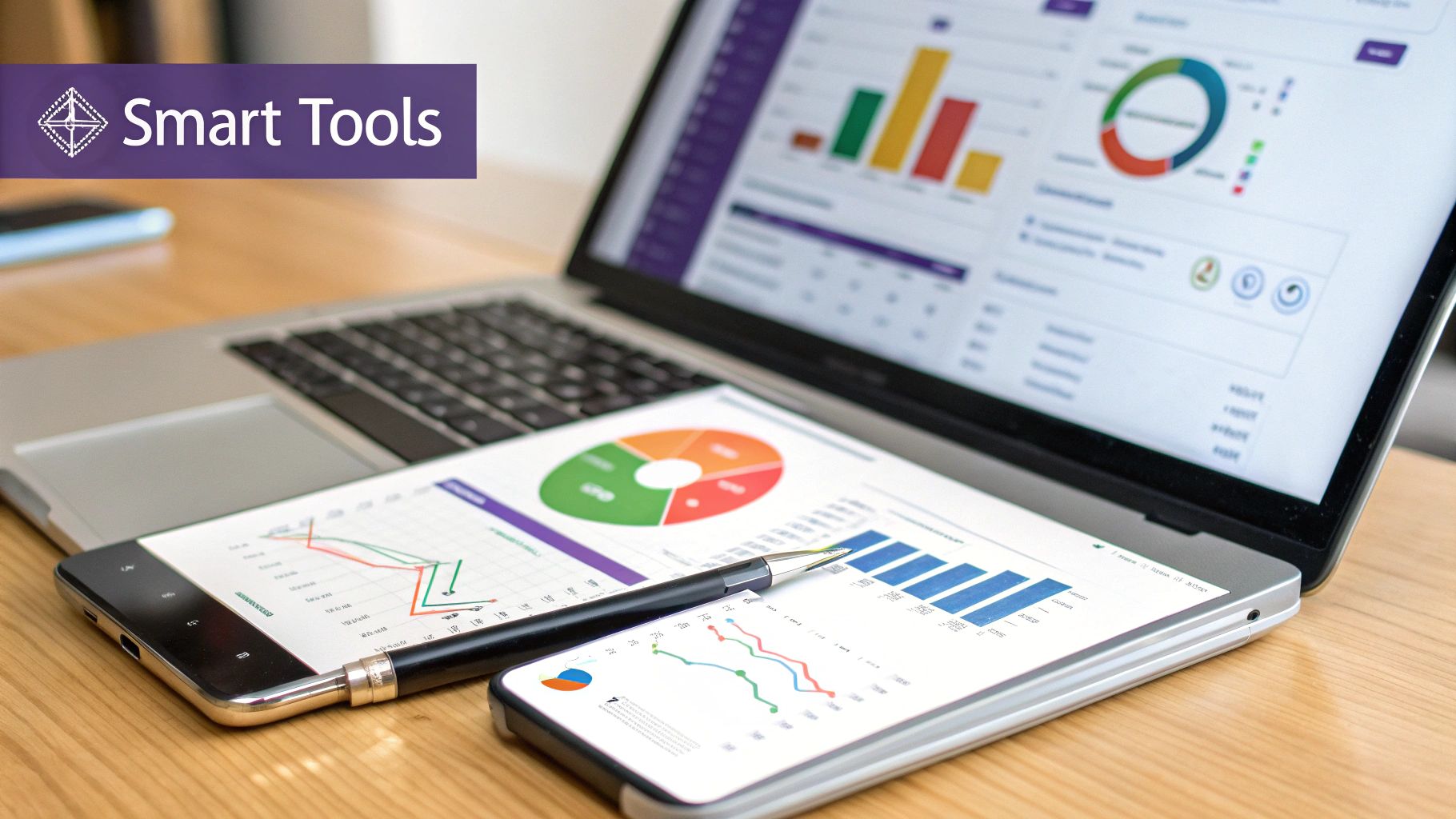
The UK is witnessing a significant rise in the adoption of recruitment automation. Several factors are driving this change. From skills shortages and growing hiring needs to the demand for increased efficiency and a better candidate experience, automation is becoming crucial. Businesses of all sizes are implementing automation in various ways to meet their specific requirements.
Automation Adoption Across UK Businesses
Startups and small businesses often begin with the basics. An Applicant Tracking System (ATS), like SeeMeHired, helps manage applications and streamline communication. This enables them to handle a higher volume of applicants without increasing the size of their HR teams.
Larger enterprises, however, are using more advanced AI-driven platforms. These automate more complex tasks like candidate screening and shortlisting, helping them quickly identify promising candidates from a large pool of applicants. For example, AI-powered tools can analyse CVs for specific skills and experience, significantly reducing manual review time.
This increasing adoption is underscored by the fact that 68% of UK recruitment professionals now use AI in their workflows. Moreover, 45% of recruitment leaders spend over half their working hours on administrative tasks, many of which could be automated. Learn more about the challenges faced by UK agencies here.
The Regulatory Landscape and Automation
The UK's regulatory environment, particularly GDPR, plays a major role in how automation is implemented. Organisations must ensure their data collection and processing comply with these regulations. This includes obtaining consent for data usage and maintaining data security.
Emerging AI governance frameworks are also shaping best practices for responsible AI use in recruitment. This focus on ethical and legal considerations is key to maintaining a positive employer brand and building trust.
The Evolving Role of Recruitment Agencies
Traditional recruitment agencies are adapting to this changing environment, incorporating automation tools to remain competitive. They are using technology to enhance candidate matching, improve communication, and provide better service.
This adaptation is vital for agencies to remain relevant and valuable in an increasingly automated recruitment market. As automation reshapes the industry, agencies that embrace these advancements will be well-positioned for success.
Essential Tools That Actually Drive Results
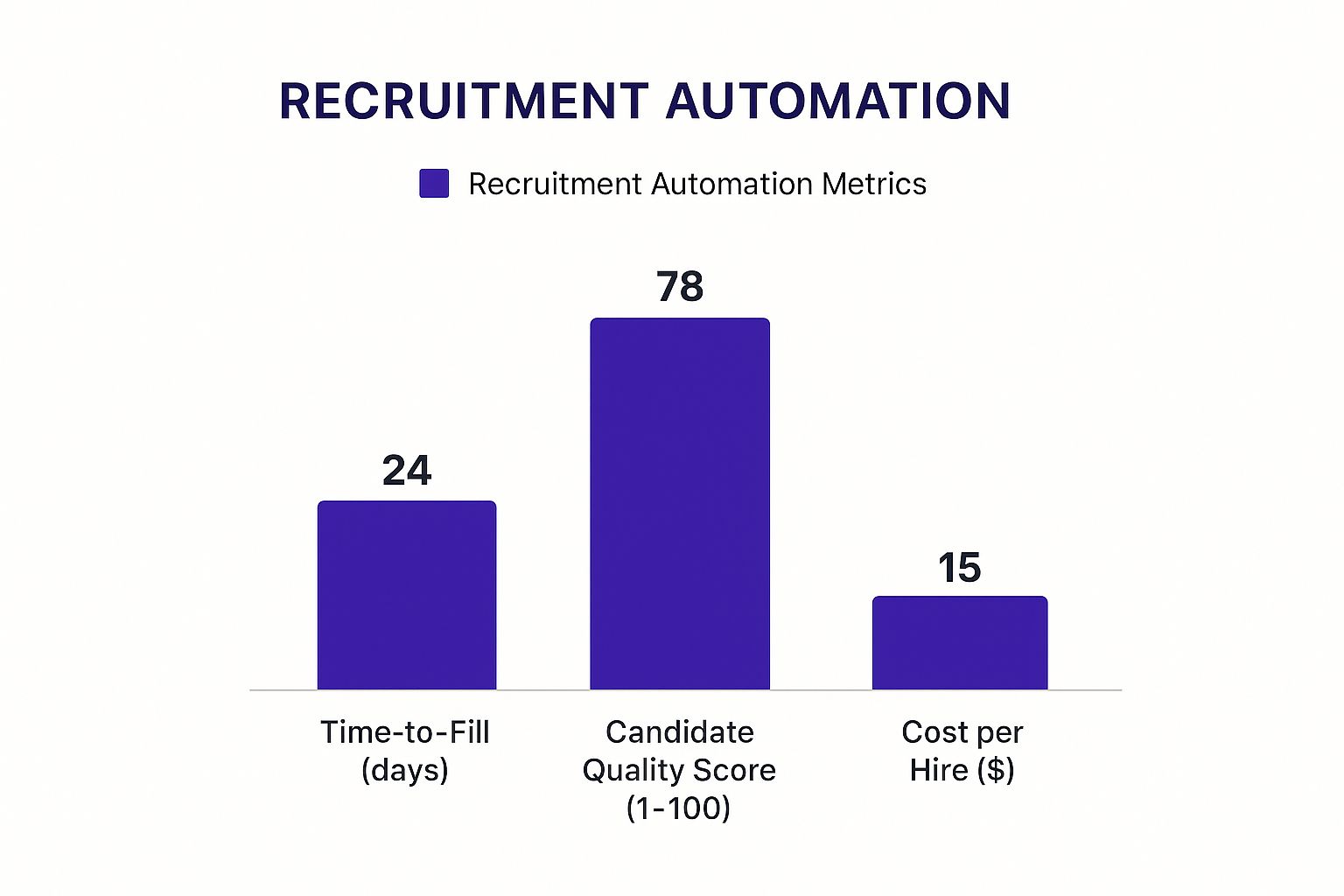
The infographic above illustrates how recruitment automation affects key hiring metrics. Notice the significant improvements in Time-to-Fill, Candidate Quality Score, and Cost-per-Hire. Automation demonstrably speeds up the hiring process, improves the quality of candidates, and lowers costs. These combined benefits make a strong case for UK businesses looking to enhance their recruitment efficiency.
Applicant Tracking Systems (ATS)
A robust Applicant Tracking System (ATS) is the foundation of any successful recruitment automation strategy. Consider your ATS as the command centre for all your hiring activities. A platform like SeeMeHired manages every step, from initial application to interview scheduling. This replaces messy spreadsheets and endless email chains with a single, organised platform. Want to explore more ATS options? Check out this helpful resource: The Top 11 Recruitment Automation Software Tools in 2024.
AI-Powered Screening Tools
AI-powered screening tools can significantly reduce the time spent reviewing resumes. These tools use predefined criteria to analyse applications and automatically shortlist candidates who meet the requirements. This allows HR professionals to focus on interviewing and evaluating the most promising candidates, leading to a fairer and more objective selection process.
Video Interviewing Platforms
Video interviewing platforms have become a valuable tool in modern recruitment. They offer a flexible and efficient way to conduct initial interviews, especially beneficial for remote or hybrid teams. Video interviews save time and resources by allowing recruiters to screen candidates from anywhere, while also providing candidates with a more convenient experience.
Onboarding Automation Software
Automating the onboarding process with onboarding automation software is crucial for smoothly integrating new hires. By automating paperwork, training, and other administrative tasks, you can ensure a positive first impression and help new employees quickly become productive members of the team.
Building a Comprehensive Automation Stack
While individual tools can be beneficial, the real advantage comes from creating an integrated automation stack. Each technology plays a crucial role, working together to create a seamless hiring journey. This synergy leads to substantial improvements in both efficiency and the quality of hires.
Choosing tools that integrate seamlessly maximises the benefits of automation by enabling smooth data flow between systems. Imagine your ATS feeding information directly into your video interviewing platform, and then seamlessly transferring data to your onboarding software after a candidate is hired. This eliminates manual data entry and simplifies the entire process.
The following table provides a comparison of different recruitment automation tools:
Recruitment Automation Tools Comparison
A comprehensive comparison of different types of recruitment automation tools, their primary functions, implementation complexity, and typical ROI timeframes
| Tool Category | Primary Function | Implementation Time | Cost Range | Best For |
|---|---|---|---|---|
| Applicant Tracking System (ATS) | Managing all stages of the hiring process | Weeks to months | Varies widely based on features and company size | All businesses hiring regularly |
| AI-Powered Screening Tools | Automating resume screening and candidate shortlisting | Days to weeks | Varies based on features and volume | Businesses with high volumes of applicants |
| Video Interviewing Platforms | Conducting remote interviews | Days to weeks | Varies based on features and usage | Businesses with remote or distributed teams |
| Onboarding Automation Software | Automating paperwork, training, and other onboarding tasks | Days to weeks | Varies based on features and company size | Businesses looking to streamline onboarding |
This table highlights the diverse range of recruitment automation tools available, showcasing their primary functions and typical implementation timelines. The cost and suitability of each tool depend on individual business needs and size.
Finally, remember that continuous monitoring and evaluation are crucial for maximising your ROI. Regularly reviewing data, like time-to-hire and cost-per-hire, lets you identify areas for improvement and fine-tune your automation strategy for optimal results.
Your Step-by-Step Implementation Strategy
Implementing recruitment automation successfully requires a strategic approach. It's not just about purchasing software; it's about transforming your entire hiring process. Whether you're building a system from the ground up or upgrading existing tools, a well-defined plan is crucial. This phased approach ensures a smooth transition and maximises your chances of success.
Assessing Your Current Recruitment Challenges
Begin by honestly evaluating your current hiring process. Where are the bottlenecks? Are you struggling with a large volume of applications, a slow time-to-hire, or difficulty finding qualified candidates? Perhaps your team is overloaded with administrative tasks, preventing them from focusing on strategic initiatives. Identifying these pain points allows you to target automation efforts where they'll make the biggest difference.
Identifying Automation Opportunities
Once you've identified your challenges, pinpoint areas that would benefit from automation. This could include automating job postings across multiple platforms, improving candidate screening with AI-powered tools, or automating interview scheduling and communication. Look for repetitive, time-consuming tasks that software can easily handle.
Developing a Phased Implementation Plan
Implement recruitment automation in stages. Begin with a pilot project, perhaps within a single department or focused on a specific hiring challenge. This allows you to experiment, refine your approach, and gather feedback before implementing automation across the entire organisation. A phased rollout also minimises disruptions and allows your team to gradually adapt.
Change Management and Training
Introducing new technology requires careful change management. Clearly communicate the advantages of automation to your team and address any concerns. Provide adequate training on the new software and processes, ensuring everyone is comfortable and confident using the tools. You might be interested in: How to create a standout onboarding process.
Integration with Existing HR Systems
Ensure your chosen automation tools integrate seamlessly with your existing HR systems. This could involve connecting your Applicant Tracking System (ATS) with your payroll software or HR database. Seamless integration minimises manual data entry and ensures data consistency across platforms. For example, using a unified platform like SeeMeHired can significantly streamline this process.
Measuring Success and Optimising
Finally, establish key performance indicators (KPIs) to track the effectiveness of your automation efforts. Monitor metrics such as time-to-hire, cost-per-hire, and candidate quality. Use this data to refine your automation strategy over time, ensuring it continues to deliver optimal results. Regularly evaluate progress and adapt your strategy accordingly. This iterative process guarantees continuous improvement and maximises the long-term benefits of recruitment automation.
Preparing for the Future of Recruitment Automation
The UK recruitment landscape is evolving. Automation is now a core part of finding and hiring the right people. To remain competitive, UK businesses need to embrace recruitment automation and plan for its future. This includes understanding new trends, changing candidate expectations, and the evolving skills needed in the UK job market.
The Evolving Role of the Recruiter
Recruitment automation isn't about replacing human recruiters. It's about empowering them. Artificial intelligence (AI) can handle repetitive administrative tasks. However, recruiters' expertise remains essential for relationship building, evaluating soft skills, and making complex hiring decisions. This shift presents new opportunities for recruitment professionals.
For example, recruiters can focus on strategic workforce planning, building a strong employer brand, and creating a positive candidate experience. This change also means recruiters need to develop new skills. The number of UK job vacancies requiring AI skills is rising rapidly–growing four times faster than other job categories. An estimated 16% of recruitment jobs may be automated by 2030. This highlights the increasing need for AI knowledge within recruitment teams. Learn more about how recruiters are adopting AI here.
Adapting to the Changing Candidate Landscape
Candidate expectations are shifting. Today's job seekers want a smooth, personalised experience, with prompt responses and open communication. Automation helps meet these expectations by simplifying the application process, providing regular updates, and tailoring interactions.
Remote work and generational differences also affect automation strategies. Younger generations are comfortable with technology-driven communication. Automation can cater to their preference for mobile-friendly applications and virtual assessments. For more tips on streamlining your recruitment process, check out this article: 4 ways to streamline your recruitment process.
Balancing Automation with Human Expertise
Success depends on balancing automation and the human element. Automation improves efficiency, but human expertise ensures these tools are used ethically and effectively. For example, maintaining human oversight in candidate screening helps prevent bias and promote fairness.
Navigating Regulatory Changes
Keeping up with regulatory changes is also critical. UK businesses must ensure automated recruitment practices comply with data privacy regulations and AI governance frameworks. This includes adhering to GDPR (General Data Protection Regulation) principles and staying informed on best practices in AI ethics. This proactive approach minimises risk and maintains a positive brand image. By anticipating and adapting to these changes, UK businesses can maximise the benefits of recruitment automation while upholding high compliance standards.
Measuring Success and Optimising Your Strategy
Transforming your recruitment process from a simple setup to a continuously improving system needs a data-driven approach. This means defining important metrics, tracking key performance indicators (KPIs), and analysing data to refine your processes. This ultimately leads to better results and helps you achieve your hiring goals. You might be interested in: How to improve your recruitment process in 5 proven steps.
Key Performance Indicators (KPIs) for Recruitment Automation
Different automation tools call for different KPIs. For Applicant Tracking Systems (ATS) like Greenhouse, focus on metrics like time-to-hire and source-of-hire. This helps you understand how efficient your overall recruitment process is. For AI-powered screening tools such as Eightfold AI, track metrics related to candidate quality and how much manual screening time is reduced. This gives you insights into how effective your candidate selection process is.
Setting realistic benchmarks, based on your company's situation and hiring needs, is crucial. For example, a smaller company might aim to reduce time-to-hire by 20%, while a larger organisation might want to improve candidate quality scores by 15%.
To help you track and optimise your recruitment automation strategy, we've compiled a table of essential KPIs. It includes industry benchmarks and target improvements specifically for UK companies.
Introducing the "Key Recruitment Automation Metrics" table, outlining essential KPIs for gauging the success of your recruitment automation, along with baseline benchmarks and improvement targets tailored for UK businesses.
| Metric | Description | Industry Benchmark | Target Improvement | Measurement Frequency |
|---|---|---|---|---|
| Time-to-Hire | Time taken to fill a position | 45 days | 20% (36 days) | Monthly |
| Source-of-Hire | Where successful hires originated | Referrals (20%), Job boards (50%) | Increase referrals to 30% | Quarterly |
| Candidate Quality Score | Assessment of candidate suitability | 7/10 | 15% (8/10) | Monthly |
| Cost-per-Hire | Total cost associated with filling a position | £4,000 | 10% (£3,600) | Quarterly |
| Offer Acceptance Rate | Percentage of offers accepted | 80% | 5% (85%) | Monthly |
This table provides a starting point for establishing your own KPIs and setting realistic targets for improvement. Regularly monitoring these metrics allows you to identify areas for optimisation and track progress towards your hiring objectives.
Optimising Your Automated Workflows
A/B testing is essential for optimising automated workflows. This involves testing different versions of emails, job postings, or chatbot scripts to see which performs best. For instance, testing two different subject lines for candidate outreach emails can show which gets higher open rates.
AI algorithms in your recruitment automation tools need continuous optimisation to improve candidate matching. This includes giving feedback to the system on how relevant suggested candidates are. This feedback loop helps refine the algorithm's accuracy, improving the quality of matches and saving your team time.
Balancing Efficiency and Candidate Experience
While efficiency metrics like time-to-hire are important, they shouldn't negatively affect candidate experience. Balancing speed and quality is key. Clear communication, personalised interactions, and a smooth application process contribute to a positive candidate experience.
This not only improves your chances of attracting top talent but also strengthens your employer brand. Candidates with positive experiences are more likely to recommend your company, regardless of whether they get the job. This can significantly affect your future hiring efforts.
Streamline Your Hiring with SeeMeHired
SeeMeHired's platform offers the tools you need to measure success and optimise your recruitment strategy. From multi-channel job posting and smart candidate matching to video interviews and real-time analytics, SeeMeHired helps you meet your hiring goals while delivering a positive candidate experience. Learn more at SeeMeHired.

